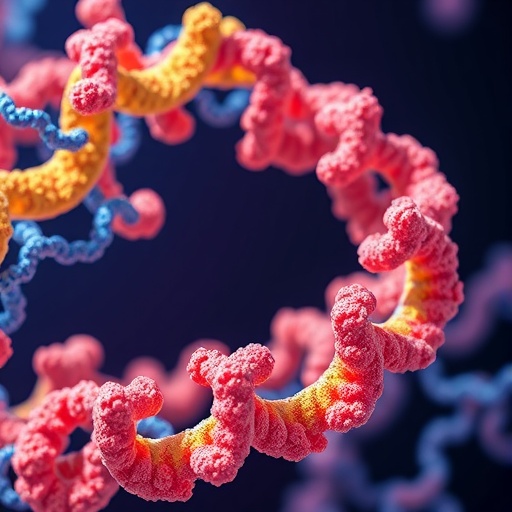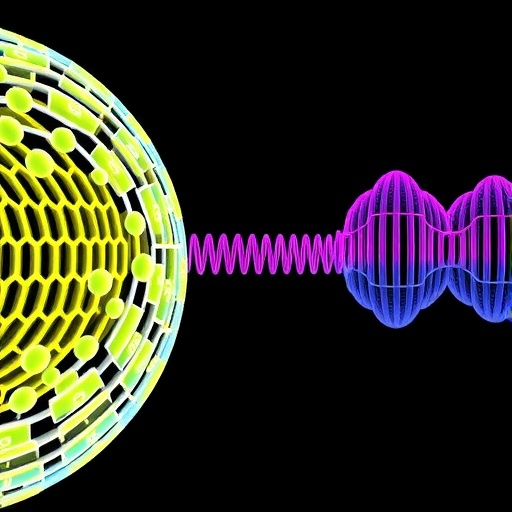
Controlling protein-protein interactions lies at the heart of numerous biological processes, from signaling pathways and cellular growth to immune defense mechanisms. The ability to design proteins that can bind specifically and effectively to therapeutic targets offers immense promise for biotechnology and medicine. However, traditional approaches to discovering protein binders involve exhaustive experimental screening of vast libraries, often requiring specialized computational skills and resources not universally available. Recently, a groundbreaking method named BindCraft has emerged, revolutionizing how scientists approach protein binder design by leveraging the predictive power of advanced neural networks in a streamlined, accessible manner.
Developed by researchers at EPFL’s Laboratory of Protein Design and Immunoengineering (LPDI), with key collaboration from experts at MIT, BindCraft upends the conventional protein design pipeline. Instead of inputting amino acid sequences into neural networks and then laboriously testing thousands of candidates for proper binding, BindCraft begins with desired structural properties. Using Google DeepMind’s AlphaFold2, it reverse-engineers new protein binders tailored to specific targets. This approach dramatically reduces the requisite trial numbers from tens of thousands to just a handful, enabling labs with limited computational experience to engage in binder design effectively.
At the core of BindCraft is the innovative use of protein structure prediction networks not merely as passive predictive tools but as active generative engines. By harnessing AlphaFold2’s ability to predict protein folding with remarkable accuracy from given sequences, the team ingeniously flipped the process, generating sequences that yield the desired folded shape and functional interactions from the outset. This “reverse engineering” circumvents traditional randomness and uncertainty, focusing computational power on generating binders that inherently possess needed functional features.
The efficiency gains from this strategy are significant. Conventional high-throughput screening approaches require vast experimental and computational resources to sift through enormous combinatorial spaces of protein variants. BindCraft’s design philosophy targets quality over quantity, drastically lowering the barrier to entry for rational protein engineering. By conducting focused screening on a small pool of computationally optimized candidates, researchers can iterate faster and with higher confidence in therapeutic applicability.
To validate their approach, the LPDI team selected a diverse panel of biologically and clinically relevant target molecules. These included adeno-associated viruses (AAVs), commonly employed vectors for gene delivery; the CRISPR-Cas9 system, a revolutionary gene-editing nuclease; and various prevalent allergens. Across this spectrum, BindCraft’s generated binders demonstrated a striking average success rate of 46% in binding assays. This performance indicates not only functional specificity but also the potential to finely modulate protein interactions for therapeutic advantage.
Specifically, in the context of AAVs, the novel binders are envisioned to direct gene therapy vectors precisely to intended tissues or cell types while minimizing off-target effects that have historically posed risks. In gene editing applications, such as those involving CRISPR-Cas9, the binders can serve as regulatory checkpoints, halting the nuclease’s activity spatially or temporally to increase editing safety profiles. This degree of control over therapeutic modalities represents a paradigm shift, enhancing both efficacy and precision.
The impact of BindCraft has been swift and broad. Since its initial preprint release, the platform has garnered extensive attention from academic and industry groups alike. Scientists worldwide rapidly adopted the tool, indicating a strong demand for accessible, user-friendly protein design methods. This enthusiastic reception has also generated valuable user feedback, prompting the development team to expand the platform’s capabilities further, including adapting the method for challenging targets like smaller peptides and other therapeutically promising molecules.
BindCraft’s integration of deep learning with structural biology affords it a unique position at the frontier of bioengineering. Unlike black-box machine learning models that operate solely on sequence data, BindCraft leverages three-dimensional structural predictions directly, ensuring generated proteins meet stringent folding and interaction criteria. This structural awareness greatly enhances the functional viability of designed binders, reducing downstream optimization headaches and accelerating translational research.
Beyond practical applications, BindCraft also contributes to the fundamental understanding of protein interaction landscapes. By successfully designing novel binding proteins that operate at an atomic level precision, researchers can dissect interaction motifs and energy landscapes more rigorously. This improved comprehension enhances predictive models and rational design efforts, benefiting fields across molecular biology, immunology, and synthetic biology.
The BindCraft methodology also heralds increased democratization in protein engineering. Historically, high computational demand and the need for specialist expertise limited protein design to elite laboratories. BindCraft’s streamlined pipeline reduces these barriers, opening doors for a broad array of research groups and fostering innovation diversity. The potential ripple effects in therapeutics development, from precision immunotherapies to gene therapies, are profound.
Importantly, while early results are promising, the field will benefit from comprehensive benchmarking against traditional techniques and longitudinal studies assessing binder stability and in vivo efficacy. The multidisciplinary nature of BindCraft, straddling computer science, structural biology, and molecular engineering, underscores the increasing necessity for collaborative efforts to harness AI-powered biodesign fully. EPFL’s initiative exemplifies how strategic coupling of cutting-edge neural networks like AlphaFold2 with domain expertise can create transformative research tools.
Looking forward, the LPDI team’s plans to extend BindCraft’s capabilities foreshadow exciting advances. Adapting the platform for smaller molecular targets such as peptides paves the way for designing next-generation molecules that may leverage enhanced cell penetration, stability, or multifunctionality. Continued integration of AI with experimental validations will likely yield a virtuous cycle of model refinement and breakthrough innovations in protein therapy.
In summary, BindCraft addresses a pivotal need in molecular biotechnology by making bespoke protein binder design more precise, efficient, and accessible. Its innovative use of protein structure prediction networks to generate candidate sequences represents a conceptual leap beyond traditional trial-and-error methodologies. By democratizing design capabilities and accelerating therapeutic discovery, BindCraft stands poised to significantly impact how drugs and molecular tools are developed in the coming era of synthetic biology.
Subject of Research: Protein engineering and design of functional protein binders
Article Title: BindCraft: one-shot design of functional protein binders
News Publication Date: 27-Aug-2025
Web References:
https://www.nature.com/articles/s41586-025-09429-6
References:
BindCraft: one-shot design of functional protein binders, Nature, DOI: 10.1038/s41586-025-09429-6
Image Credits: 2025 LPDI EPFL CC BY SA
Keywords: Proteins, Biotechnology, Machine learning, Protein folding, Medical treatments, Gene editing
Tags: accessible protein engineeringAlphaFold2 applicationBindCraft softwarecomputational biology advancementsEPFL MIT collaborationneural networks in biotechnologyopen-source AI platformprotein design innovationprotein structure predictionprotein-protein interactionsrevolutionizing drug discoverytherapeutic protein binders




